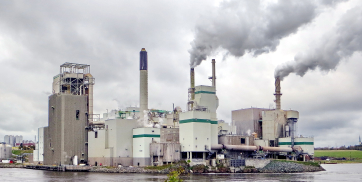How Much Gas is That?!
A pneumatic controller emitting more than 0.17 cubic meters of methane per hour is considered “high bleed” and should be replaced. But how much gas is that?! Well, about the same as 6 standard cubic feet per hour – if you live in the United States. Does that answer your question?
No? You wanted to know the mass of methane emitted, not the volume? Well, that would depend on the chemical composition, temperature, and pressure of the natural gas. And if you want to know the carbon dioxide equivalent emissions, you will need to make assumptions about the global warming potential of methane.
Imagine that you find a gas leak of 0.5 cubic meters of methane per minute. What comes to mind? Is the leak big or small? A monumental disaster? A minor concern? A lonely cow burp? What about a leak that emits 219 kilograms per month? Or one that 3,270 liters per hour?
In fact, these leaks are all the same. Each is roughly equivalent to 73 metric tons per year of carbon dioxide – the annual emissions from 16 typical passenger vehicles. For context, this value happens to be the emission factor used by the Alberta Energy Regulator to describe an average leaking valve.
Making Sense of Emission Rates
If the examples above make your head spin, you’re not alone. There are literally dozens of ways to express emission rates, and it seems like every scientist, operator, regulator, and journalist has their own favorite approach.
For years, I’ve been trying to keep track of the most common units. I regularly use “quick and dirty” mental math to try and keep up in webinars or meetings. At some point, I realized that a better solution needed to be designed to help everyone – from natural gas pros to undergraduate students – perform these conversions and contextualize the results.
That’s why I’m both proud and excited to announce a new tool that we’ve been working on for the past few months at Highwood. The free tool, which is simply called “How much gas is that?!” allows you to convert natural gas and methane flow rates from just about any unit, automatically generating a range of equivalent outputs and context.
I invite you to explore our new tool: “How much gas is that?!” and to let us know what you think. We welcome any and all constructive criticism and suggestions – Version 2, when it comes, will be the product of your feedback!
Thank you to the entire Highwood team for their contributions, to colleagues at the University of Calgary for inspiration, to Keegan Shaw for the great web application, and to Stephanie Wong for the awesome logo.




